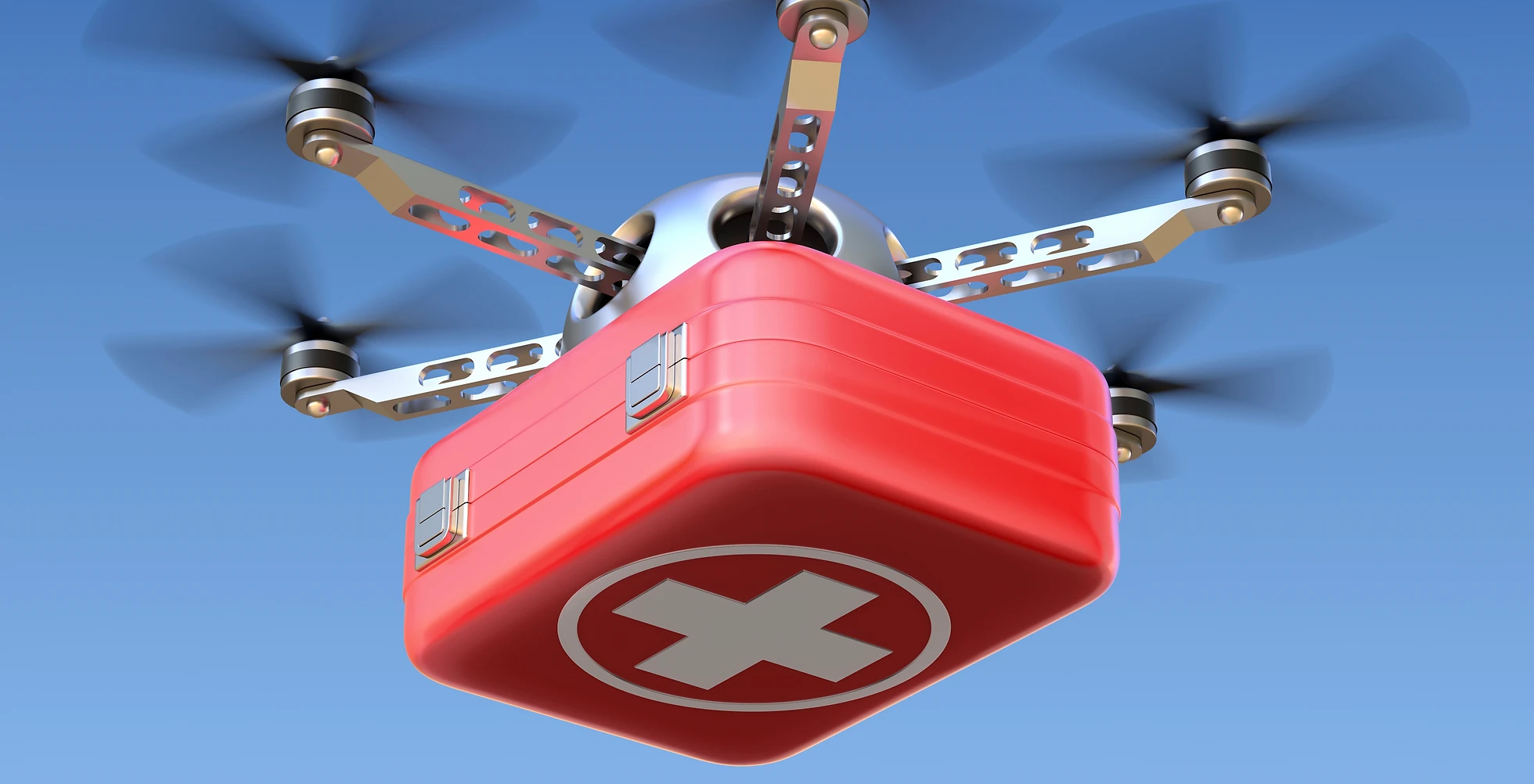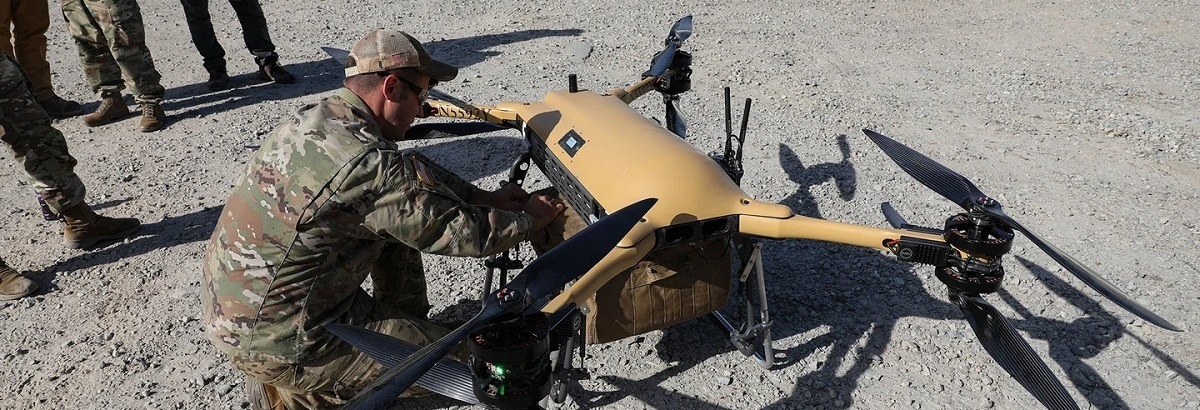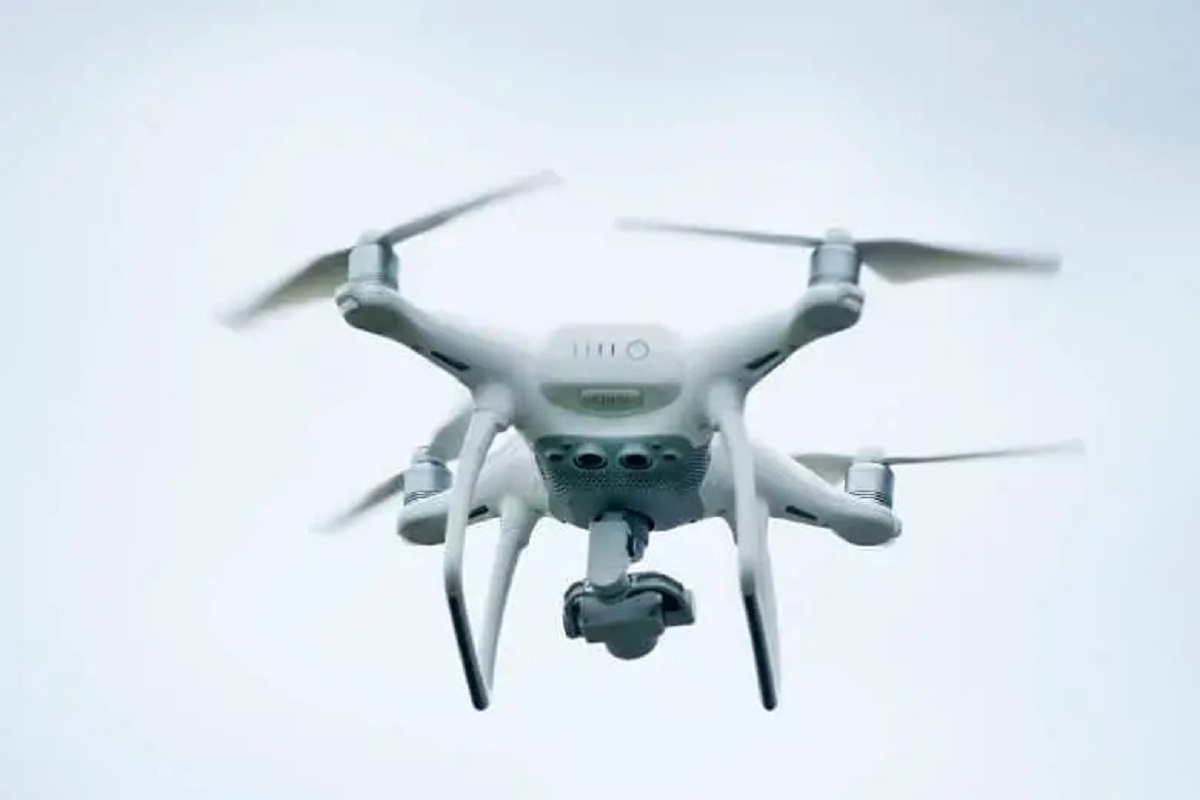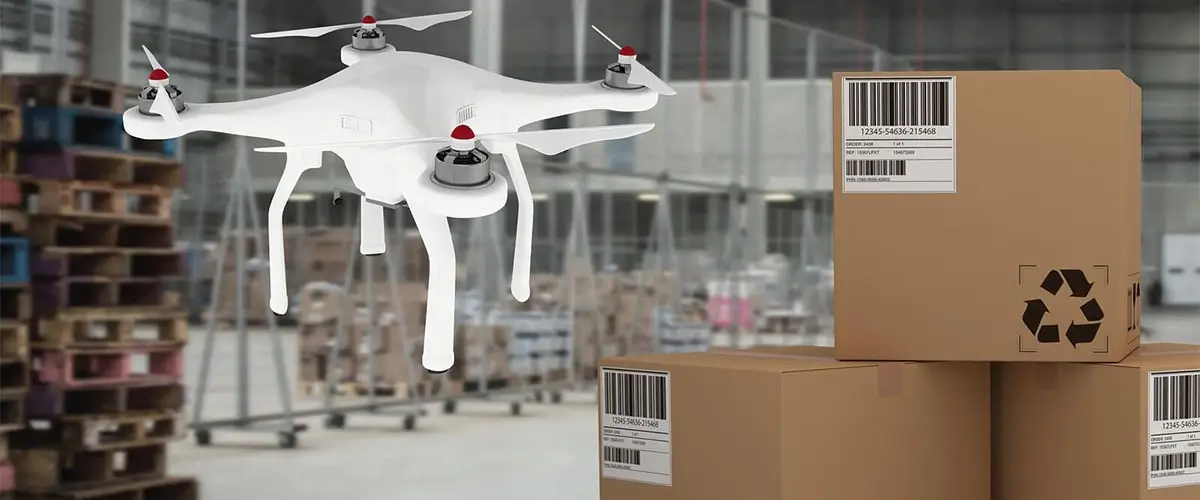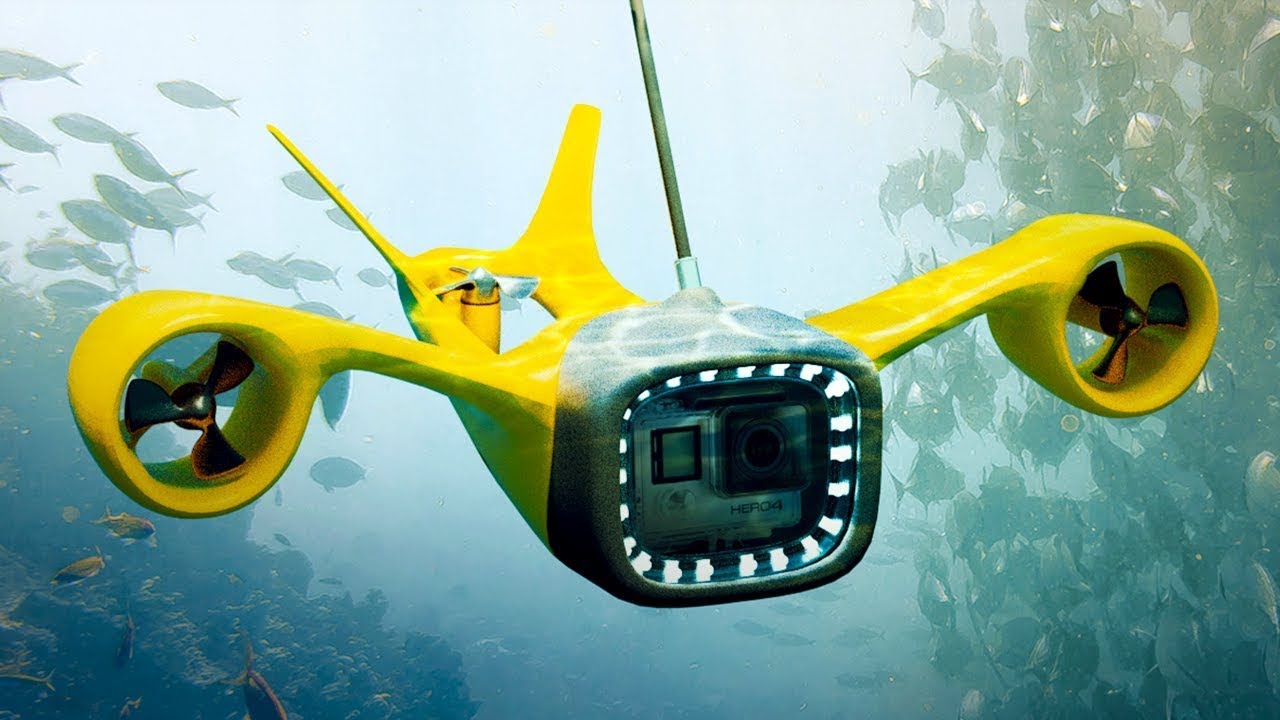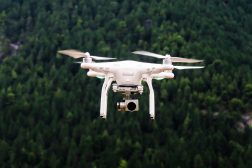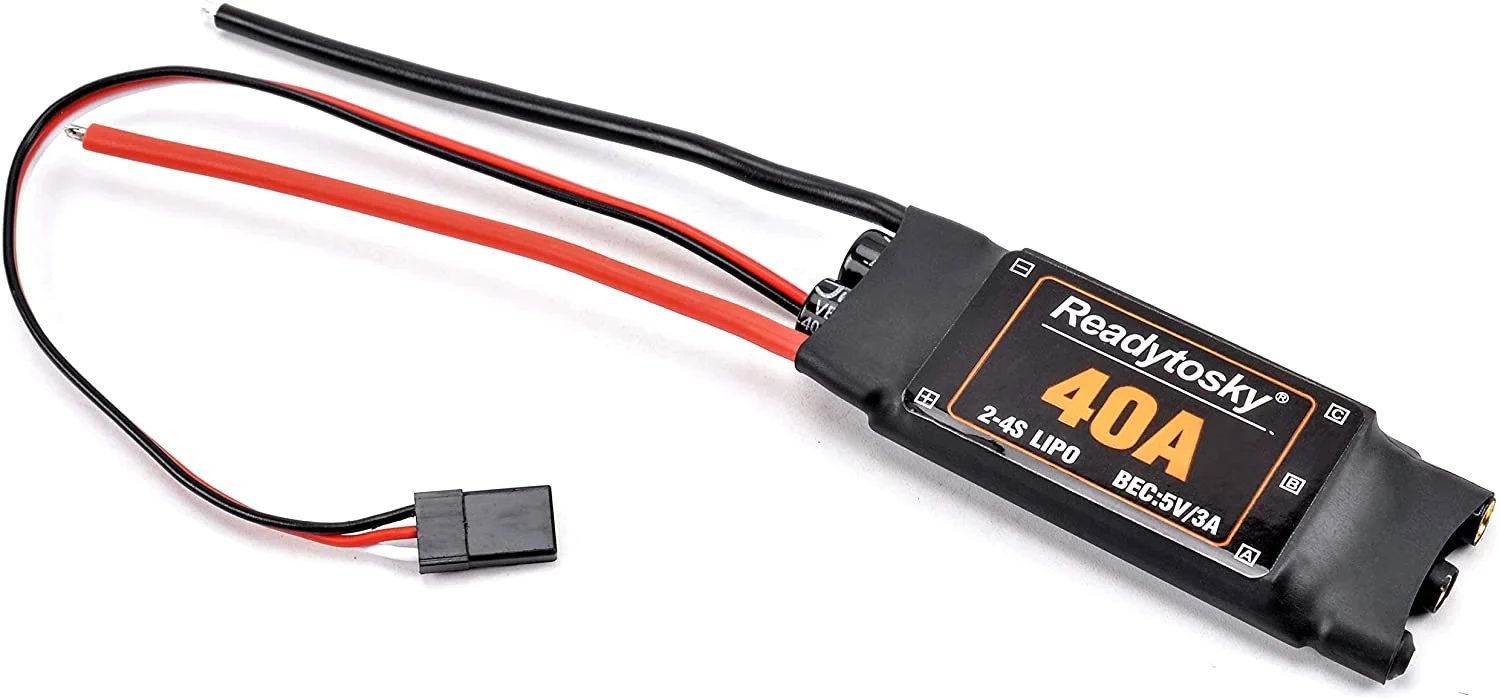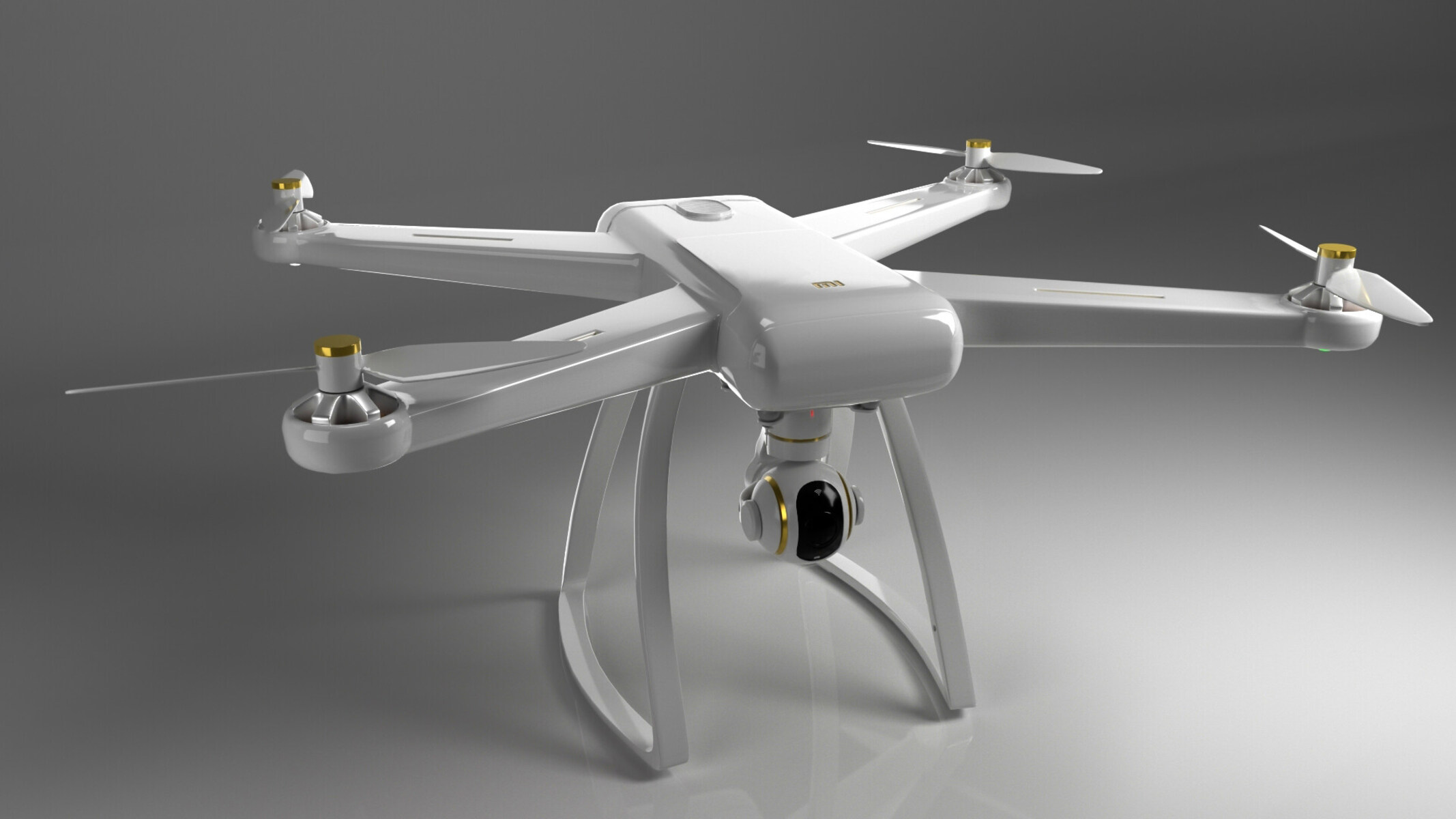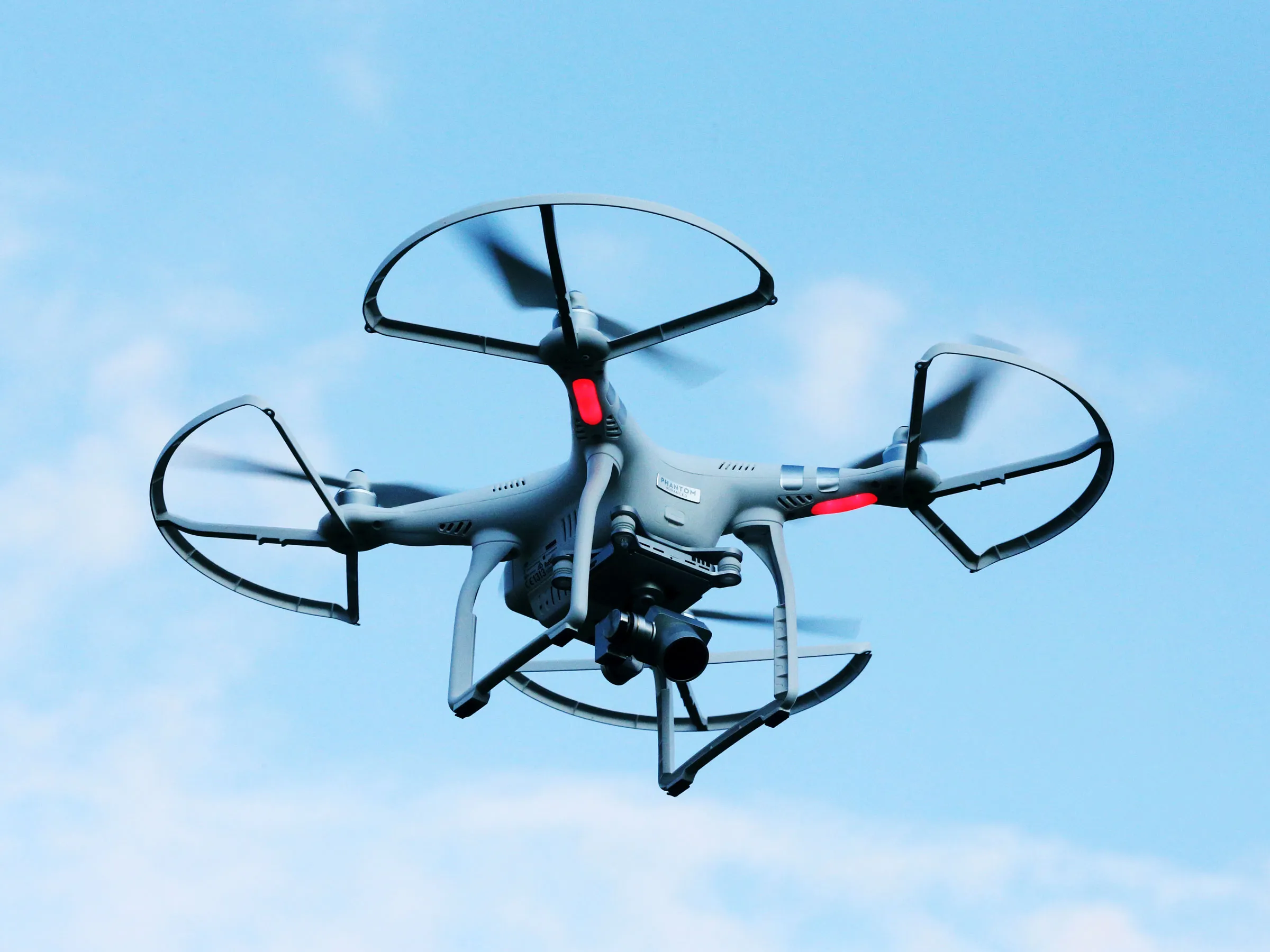Introduction
Supply drones have emerged as innovative and efficient tools for various industries, offering a range of capabilities that were once unimaginable. These autonomous aerial vehicles have revolutionized the way goods are delivered, providing faster, more cost-effective, and environmentally friendly solutions. Supply drones are equipped with advanced technology and have the ability to navigate difficult terrains, making them ideal for various applications such as disaster relief operations, monitoring and surveillance, agriculture and crop management, and much more.
In recent years, the demand for supply drones has grown exponentially, thanks to their ability to reach remote areas and deliver goods with precision. Whether it’s delivering medical supplies to inaccessible locations, monitoring wildlife populations, or aiding in construction projects, these drones have proven to be incredibly versatile.
In this article, we will explore the many tasks that supply drones perform, highlighting their significance and impact across different industries. From delivering essential goods to aiding in search and rescue operations, supply drones have revolutionized the way we approach various tasks, bringing about greater efficiency, safety, and convenience.
Delivery of Goods
One of the primary tasks performed by supply drones is the delivery of goods. With their ability to navigate through various landscapes and bypass traffic congestion, these drones have transformed the logistics industry. From small packages to medical supplies, supply drones can efficiently transport goods to remote and hard-to-reach locations.
In urban areas, supply drones can be used to deliver packages quickly and directly to customers’ doorsteps, eliminating the need for traditional delivery methods. This not only saves time but also reduces the carbon footprint associated with delivery vehicles. Additionally, supply drones can reach locations that are inaccessible by road, making them invaluable in rural or disaster-stricken areas.
During natural disasters such as earthquakes or hurricanes, supply drones can play a crucial role in providing aid and support. They can deliver emergency supplies like food, water, and medical equipment to affected areas where traditional transportation methods are severely impaired or impossible to access.
Moreover, supply drones have the potential to revolutionize the healthcare industry by enabling the delivery of medical supplies and equipment to remote or underserved areas. In emergency situations, drones can transport life-saving medications, blood samples, or organs for transplant, drastically reducing the time and logistical challenges associated with traditional delivery methods.
The use of supply drones for delivery purposes not only enhances efficiency but also reduces costs and improves accessibility. As technology continues to advance and regulations evolve, we can expect to see an even greater integration of supply drones in the delivery ecosystem, making the movement of goods faster, more reliable, and more sustainable.
Disaster Relief Operations
Supply drones have become invaluable tools in disaster relief operations, providing essential support in managing and mitigating the impact of natural disasters. These drones can quickly assess damages, deliver supplies to affected areas, and aid in search and rescue efforts.
During disasters such as earthquakes, floods, or wildfires, traditional transportation methods may be severely limited or completely disrupted. In such situations, supply drones can be deployed to deliver emergency supplies such as food, water, medicine, and shelter materials to affected populations. Their ability to bypass roadblocks and navigate through challenging terrains allows for swift and efficient delivery, even in areas considered inaccessible by other means.
Supply drones are also equipped with advanced imaging technology, enabling them to capture aerial footage and survey disaster-affected areas. This real-time data can assist emergency rescue teams in assessing the extent of damages, identifying areas of high risk, and formulating effective response strategies. By providing valuable information from a bird’s eye view, supply drones aid in optimizing resources and coordinating rescue operations.
In addition to their delivery and survey capabilities, supply drones can also be used for search and rescue operations. Equipped with thermal imaging cameras and powerful search algorithms, these drones can quickly locate missing individuals in disaster-stricken areas. They can cover vast areas much faster than ground search teams, saving precious time in critical situations and increasing the chances of successful rescues.
The use of supply drones in disaster relief operations significantly improves response times, enhances coordination, and enables more efficient allocation of resources. As technology continues to advance and regulations adapt, the integration of supply drones into emergency management plans will undoubtedly become more prevalent, leading to more effective and timely disaster response efforts.
Monitoring and Surveillance
Supply drones have proven to be highly effective tools for monitoring and surveillance purposes across a wide range of industries. Equipped with high-resolution cameras and advanced sensors, these drones can capture detailed images and videos from vantage points that would otherwise be inaccessible.
In the field of security and law enforcement, supply drones are used to monitor large events, public spaces, borders, and critical infrastructure. They can provide real-time surveillance, detecting suspicious activities, and improving situational awareness for security personnel. The ability to cover expansive areas and monitor from above allows for a comprehensive view of the surroundings, helping to prevent and respond to potential threats.
In wildlife conservation, supply drones aid in monitoring and studying animal populations. From tracking the migration patterns of endangered species to identifying illegal poaching activities, these drones play a crucial role in protecting wildlife and their habitats. The aerial perspective provided by supply drones allows researchers to gather vital data without disturbing animals or compromising their natural behavior.
Agriculture is another field that benefits greatly from the monitoring capabilities of supply drones. They can perform crop inspections, assess plant health, and identify areas in need of irrigation or treatment. This data helps farmers optimize their farming practices, increase yields, and reduce the use of pesticides and fertilizers. By providing precise and up-to-date information, supply drones contribute to sustainable and efficient agriculture.
Furthermore, supply drones are used in monitoring environmental conditions such as air quality, water pollution, and deforestation. They can collect data on a large scale, allowing scientists and researchers to analyze trends and make informed decisions regarding environmental conservation and resource management.
Overall, the monitoring and surveillance capabilities of supply drones have a wide range of applications. From enhancing security and wildlife conservation to improving agricultural practices and environmental management, these drones provide valuable insights from elevated viewpoints, ultimately leading to better decision-making and more effective resource allocation.
Agriculture and Crop Management
Supply drones have revolutionized the field of agriculture and crop management by providing farmers with a powerful tool for precision agriculture. Equipped with advanced sensors and imaging technology, these drones can gather valuable data on crop health, nutrient levels, irrigation needs, and pest infestations.
One of the key benefits of supply drones in agriculture is their ability to conduct efficient crop inspections. By flying over fields and capturing high-resolution images, drones can identify areas of stress or disease that may not be apparent from ground-level observations. This enables farmers to take targeted actions, such as applying fertilizers or pesticides only where needed, rather than blanket treatments that can be both costly and harmful to the environment.
Additionally, supply drones can provide valuable information on plant growth and development. By monitoring factors such as plant height, canopy density, and leaf health, drones can help farmers optimize irrigation schedules and detect signs of nutrient deficiencies. This data-driven approach leads to more efficient resource utilization, better crop yields, and reduced environmental impact.
The use of supply drones in agriculture also extends to seed planting and crop monitoring. Drones equipped with seed dispensers can precisely distribute seeds over large areas, optimizing planting patterns and reducing manual labor. Throughout the growing season, drones can monitor crop areas, assessing growth progress, and identifying potential issues early on. This proactive approach allows farmers to make timely adjustments and interventions, minimizing crop losses and increasing overall productivity.
Furthermore, supply drones are instrumental in the assessment and management of crop diseases and pest infestations. By using thermal imaging and multispectral sensors, drones can detect early signs of diseases or pest damage, enabling targeted interventions and preventing the spread of infections. This reduces the reliance on broad-spectrum chemicals and promotes more sustainable farming practices.
The integration of supply drones in agriculture is transforming the way farmers approach crop management. By providing real-time and accurate data on crop health, nutrient levels, water needs, and pest control, these drones empower farmers to make informed decisions, optimize resources, and achieve higher yields in a more sustainable manner.
Mapping and Surveying
Supply drones have become indispensable tools in the field of mapping and surveying, offering efficient and accurate data collection capabilities. Equipped with advanced sensors and imaging technology, these drones can capture high-resolution aerial images, create detailed 3D models, and gather precise geospatial data.
One of the key advantages of supply drones in mapping and surveying is their ability to cover large areas in a relatively short amount of time. Traditional surveying methods can be time-consuming and labor-intensive, requiring manual data collection on the ground. With supply drones, surveyors can quickly and easily capture aerial imagery and collect data from various angles, resulting in reduced project timelines and improved efficiency.
Using photogrammetry techniques, supply drones can create highly accurate 3D models and maps of areas of interest. By capturing multiple images of the same location from different angles, the drone’s software can stitch them together and create detailed representations of the terrain, buildings, and infrastructure. These 3D models offer valuable insights for urban planning, land development, and environmental assessments.
In the construction industry, supply drones play a crucial role in surveying and monitoring construction sites. They can provide regular progress updates, monitor the quality of construction work, and identify any potential issues or discrepancies. The ability to capture real-time imagery and data allows project managers to make informed decisions, improve communication, and ensure projects are completed on time and within budget.
Supply drones are also used for topographic surveys, contributing to accurate and up-to-date maps of natural features, terrain elevation, and land contours. This information is vital for various applications, including infrastructure development, flood risk assessments, and environmental conservation efforts. Supply drones can swiftly and safely capture precise elevation data, enabling engineers and planners to make informed decisions based on reliable information.
Furthermore, supply drones are utilized in archaeological surveys for mapping and documentation purposes. They can capture detailed images of archaeological sites, assisting archaeologists in analyzing and preserving cultural heritage. By providing an aerial view of the site, drones aid in identifying traces of ancient settlements, mapping excavation areas, and documenting artifacts.
In summary, supply drones are transforming the field of mapping and surveying, providing efficient data collection, precise 3D modeling, and accurate mapping capabilities. Their integration in various industries offers improved project planning, resource management, and decision-making, ultimately leading to more effective and sustainable development.
Search and Rescue Operations
Supply drones have proven to be invaluable tools in search and rescue operations, aiding in locating missing individuals, providing critical assistance, and enhancing overall rescue efforts. Equipped with advanced imaging technology and search algorithms, these drones can cover large areas, access hard-to-reach locations, and quickly provide crucial information.
During search and rescue missions in rugged terrains or remote areas, supply drones have the ability to reach places where human rescuers may encounter difficulties or risks. Drones can be deployed to locate missing hikers, stranded climbers, or individuals lost in dense forests or mountainous regions. By utilizing thermal imaging cameras and powerful search algorithms, drones can identify heat signatures and detect signs of life even in challenging conditions.
Supply drones can also aid in water-based search and rescue operations. Equipped with flotation devices or waterproof compartments, these drones can be deployed in water bodies such as rivers, lakes, or coastal regions to locate and assist individuals in distress. The ability to fly over the water and capture images and videos allows rescuers to assess the situation, pinpoint the location of the person in need, and coordinate rescue efforts more effectively.
Furthermore, supply drones can provide critical assistance in natural disasters, such as earthquakes or hurricanes, where immediate rescue and medical attention may be required. They can transport medical supplies, communication equipment, or even perform aerial assessments to identify trapped or injured individuals. In these situations, time is of the essence, and supply drones offer a rapid response to provide aid when traditional means are hindered.
Supply drones also enhance the safety of search and rescue personnel by reducing the need for extensive physical search operations in hazardous environments. Drones can survey unstable structures or dangerous areas after a disaster, providing real-time intelligence without risking human lives. This information guides rescue teams, enabling them to focus on areas where assistance is most needed and optimizing their efforts.
Overall, supply drones have revolutionized search and rescue operations, offering aerial capabilities that greatly enhance the effectiveness and efficiency of rescue missions. From locating missing individuals to providing crucial aid in emergency situations, these drones have become essential tools in saving lives and minimizing the risks faced by search and rescue teams.
Medical Supply Delivery
Supply drones are playing a vital role in the delivery of medical supplies, revolutionizing the healthcare industry and improving access to critical resources, especially in remote or underserved areas. The speed, efficiency, and reliability of supply drones make them invaluable in emergency situations and for reaching locations with limited or inaccessible transportation infrastructure.
One of the key applications of supply drones in healthcare is the delivery of emergency medical supplies. In regions affected by natural disasters or conflict, access to medical facilities and essential resources can be severely limited. Supply drones can be deployed to transport life-saving medications, vaccines, blood samples, or even organs for transplant, overcoming geographical barriers and reducing delivery times substantially.
Supply drones can also serve as a means of delivering medical supplies to remote or isolated communities, addressing the challenge of reaching underserved populations. In rural areas or regions with limited infrastructure, the use of drones can bridge the gap in healthcare access by transporting medicines, diagnostic tools, and other medical equipment quickly and efficiently, ensuring that necessary care reaches those in need.
The use of supply drones is particularly advantageous in situations where time is critical. In emergencies such as cardiac arrests or trauma cases, every minute counts. Supply drones can transport essential medical equipment, such as defibrillators or emergency medications, to the scene, providing immediate assistance before ambulances or medical professionals can arrive.
Additionally, supply drones can contribute to the delivery of healthcare in urban areas, where congested roadways and traffic delays can greatly impact timely medical interventions. By bypassing traffic congestion, supply drones can transport medical supplies between hospitals, laboratories, or clinics quickly and efficiently, ensuring that patient care is not compromised due to transportation challenges.
Furthermore, supply drones can be equipped with telemedicine capabilities, enabling healthcare professionals to remotely assess and provide medical guidance to individuals in remote locations. The drone can deliver medical devices with monitoring technology, allowing patients to receive guidance and support from healthcare professionals without having to travel long distances.
The use of supply drones for medical supply delivery has the potential to save lives, improve healthcare outcomes, and enhance healthcare systems’ overall efficiency. With ongoing advancements in technology and improvements in regulations surrounding drone operations, we can expect to see even more significant integration of supply drones in medical supply chains, ultimately benefitting patients and communities worldwide.
Environmental Conservation and Wildlife Monitoring
Supply drones are proving to be invaluable tools in the realm of environmental conservation and wildlife monitoring. The ability of these drones to access remote areas and capture high-resolution imagery allows for more comprehensive monitoring of ecosystems, endangered species, and the overall health of our environment.
Environmental conservation efforts often require monitoring vast areas of land, including forests, wetlands, and protected habitats. Supply drones equipped with advanced sensors, such as multispectral or hyperspectral imaging, can capture detailed data on vegetation health, land cover changes, and other environmental indicators. This information helps scientists and conservationists gain insights into ecosystem dynamics, identify areas at risk, and make informed decisions regarding preservation and restoration efforts.
One of the key advantages of supply drones in environmental conservation is their ability to access remote and hard-to-reach locations. They can provide an aerial perspective that was once challenging to achieve, allowing for more accurate assessments of wildlife populations, nesting sites, and migration patterns. This data enables conservationists to effectively monitor endangered species and implement targeted conservation strategies to protect their habitats.
Supply drones also play a crucial role in combatting illegal activities such as poaching and deforestation. With their thermal imaging capabilities, drones can detect heat signatures and identify potential illicit activities in protected areas. This enables timely interventions by law enforcement agencies, helping to safeguard wildlife populations and preserve delicate ecosystems.
Moreover, supply drones contribute to the monitoring and preservation of marine environments. They can be used to identify and track marine species, study coral reefs, and detect changes in coastal ecosystems. The ability of drones to fly over the ocean and capture high-resolution imagery allows for more comprehensive monitoring, leading to better management and protection of our marine resources.
Supply drones also aid in the monitoring of pollution levels in air and water. They can collect samples, measure pollutant concentrations, and identify pollution sources. This data is vital for understanding the impact of human activities on the environment and guiding efforts to reduce pollution and improve environmental sustainability.
In summary, supply drones greatly enhance environmental conservation and wildlife monitoring efforts. Their ability to access remote areas, capture detailed imagery, and gather valuable data makes them essential tools for scientists, conservationists, and wildlife management teams. By providing comprehensive insights into ecosystem health and aiding in the detection of illegal activities, supply drones contribute to the preservation and protection of our environment.
Construction and Infrastructure Development
Supply drones are revolutionizing the construction and infrastructure development industry, providing advanced capabilities for surveying, monitoring, and improving efficiency in various construction processes. These drones are transforming the way projects are planned, executed, and managed, ultimately leading to cost savings and improved construction outcomes.
One of the primary uses of supply drones in construction is the surveying and mapping of construction sites. Drones equipped with high-resolution cameras and LiDAR sensors can quickly and accurately capture data, creating detailed topographic maps, and 3D models of the site. This information allows architects, engineers, and construction teams to gain a comprehensive understanding of the terrain, assist in site analysis, and help in the design process.
Supply drones also play a vital role in monitoring construction progress. By flying over the site and capturing images or videos at regular intervals, they provide real-time updates on the project’s status. This enables project managers to closely monitor progress, identify potential issues or delays, and make informed decisions to keep the project on track.
Furthermore, drones can assist with inspection tasks, particularly for hard-to-reach or hazardous areas. They can quickly identify potential safety hazards, detect structural flaws, and assess the condition of buildings or infrastructure. This improves safety protocols and helps in maintaining the integrity of construction projects.
Supply drones can also enhance logistical operations in construction sites. By delivering small tools, equipment, or supplies directly to workers on-site, drones save time and reduce the reliance on manual transportation methods. This increases productivity and allows workers to focus on their core tasks without interruption.
Moreover, supply drones are increasingly being used for building inspections and maintenance. They can access difficult-to-reach areas such as rooftops and facades, capturing detailed imagery for damage assessments or maintenance planning. This saves time and reduces risks associated with manual inspections.
Additionally, supply drones are utilized in the construction of infrastructure such as bridges, roads, and pipelines. With their ability to monitor progress, detect potential issues, and provide real-time insights, these drones ensure that construction projects meet specifications, adhere to safety standards, and are completed efficiently.
In summary, supply drones are transforming construction and infrastructure development by providing accurate surveying, real-time monitoring, and enhanced safety protocols. Their integration in various construction processes optimizes project planning, ensures quality control, and increases overall efficiency, leading to successful construction outcomes.
Conclusion
Supply drones have revolutionized various industries, offering a wide range of capabilities that were once unimaginable. From delivering goods to remote areas and aiding in search and rescue operations to monitoring wildlife populations and assisting in construction projects, these autonomous aerial vehicles have proven to be invaluable tools in today’s technological landscape.
The delivery of goods has been significantly transformed by supply drones, providing faster and more environmentally friendly solutions. Whether it’s delivering medical supplies to inaccessible locations or reaching disaster-stricken areas with emergency aid, these drones have become essential in ensuring timely and efficient delivery.
In disaster relief operations, supply drones have been instrumental in providing aid and support. From delivering emergency supplies to assessing damages and aiding in search and rescue efforts, these drones play a critical role in minimizing the impact of natural disasters and improving response times.
Monitoring and surveillance capabilities have been enhanced by supply drones, enabling better security measures, wildlife conservation efforts, and agricultural management practices. These drones offer an aerial perspective that allows for more comprehensive data collection, guiding decision-making in various industries.
Supply drones are transforming the field of agriculture and crop management, enabling precise monitoring, targeted interventions, and optimized resource utilization. By gathering data on crop health, irrigation needs, and pest infestations, these drones contribute to sustainable and efficient farming practices.
The mapping and surveying industry has greatly benefitted from the integration of supply drones, providing efficient data collection, 3D modeling, and accurate mapping capabilities. From urban planning to construction monitoring, these drones offer enhanced surveying methods, improving project planning, and resource management.
In the realm of search and rescue operations, supply drones have become essential tools in locating missing individuals, providing critical assistance, and enhancing overall rescue efforts. Their ability to access hard-to-reach locations and provide real-time information allows for more effective and efficient search and rescue missions.
Supply drones are also playing a significant role in medical supply delivery, improving access to essential resources in remote or underserved areas. Whether it’s delivering emergency medications or providing telemedicine capabilities, these drones contribute to better healthcare outcomes and save lives.
Environmental conservation and wildlife monitoring efforts have been greatly bolstered by supply drones, allowing for comprehensive monitoring of ecosystems, endangered species, and environmental factors. These drones aid in preserving and protecting our environment for future generations.
Construction and infrastructure development have been positively impacted by the integration of supply drones, providing efficient surveying, monitoring, and logistical capabilities. With their ability to gather data, enhance safety protocols, and optimize project management, these drones improve construction outcomes and save costs.
In conclusion, supply drones have reshaped various industries, offering innovative solutions, enhancing efficiency, and improving safety. With ongoing advancements in technology and the adaptation of regulations, supply drones will continue to play an increasingly vital role in our society, providing numerous benefits and transforming the way we approach tasks across various sectors.







